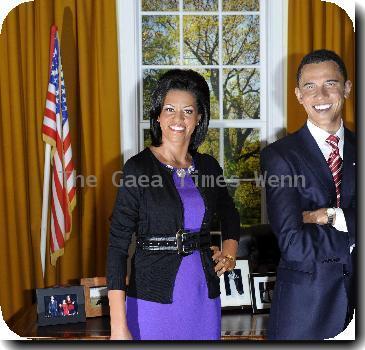Agency became so worried about offshore drilling accidents it moved to create new safety rules
By APFriday, April 23, 2010
Oil drilling accidents prompted new safety rules
NEW ORLEANS — Federal regulators did not need this week’s explosion aboard a state-of-the-art oil rig to know the offshore drilling industry needed new safety rules: Dozens of deaths and hundreds of injuries over the last several years had already convinced them that changes were needed.
The U.S. Minerals and Management Service is developing regulations aimed at preventing human error, which it identified as a factor in many of the more than 1,400 offshore oil drilling accidents between 2001 and 2007.
What caused Tuesday’s massive blast off the Louisiana coast is unknown. U.S. Coast Guard and oil-company crews spent Friday trying to clean up the environmental mess created by the sunken rig, and continuing what increasingly appeared to be a futile search for 11 workers missing since the blast. The other 115 crew members made it off the platform, though four were critically hurt.
The rig, the Deepwater Horizon, was the site of a 2005 fire found to have been caused by human error. An MMS investigation determined that a crane operator on the rig had become distracted while refueling the crane, allowing diesel fuel to overflow. Records show the fire was quickly contained, but caused $60,000 in damage to the crane.
An MMS review published last year found 41 deaths and 302 injuries out of 1,443 accidents from 2001 to 2007, the majority of caused by human error and operational and maintenance problems.
As a result of the findings, the MMS is developing new rules that would require rig operators to develop programs focused on preventing human error, an area that hadn’t received as much attention in the past. The agency, which has yet to implement the new rules, also proposed audits once every three years.
Environmentalists say that while new technology touted by oil industry executives continues to improve, people still have to oversee those devices and human error remains a widespread problem.
“You can’t outlaw human error,” Richard Charter, a senior policy adviser with Defenders of Wildlife, who has been involved in drilling issues for 30 years, said of Tuesday’s explosion. “It’s one of the sidebar issues now emerging for the Horizon incident — these are common incidents and this was just a bigger one.”
Opponents of President Barack Obama’s plan for more offshore drilling, particularly off the East Coast, say the explosion on the Deepwater Horizon should be taken as a warning to slow the fervor to “drill, baby drill.”
“I would hope it would serve as another wake-up call on this issue that there is no such thing as safe oil drilling,” said Sara Wan, a member of the California Coastal Commission, a state regulatory agency. “Once that oil starts leaking in the ocean, that damage is irreversible. You just look at what happened with Exxon-Valdez — they’re still feeling the effects of it. There’s no real way to clean it up.”
Obama showed no sign of budging Friday. Spokesman Robert Gibbs said the president still believes increasing domestic oil production can be done safely, securely and without harming the environment.
“I don’t honestly think it opens up a whole new series of questions, because, you know, in all honesty I doubt this is the first accident that has happened and I doubt it will be the last,” Gibbs said.
BP PLC, which leased the rig and is taking the lead in the cleanup, said it has activated an extensive oil spill response, including using remotely operated vehicles to assess the well and 32 vessels to mop up the spill.
An undetermined amount of oil has spilled from the rig, which is owned by Transocean Ltd. The sheen appeared to cover an area about two miles wide and eight miles long Friday afternoon, said Petty Officer Ashley Butler of the Coast Guard.
Coast Guard Rear Adm. Mary Landry said no oil appeared to be leaking from a well head at the ocean floor, nor was any leaking at the water’s surface. But she said crews were closely monitoring the rig for any more crude that might spill out.
About half a dozen boats were using booms to trap the thin sheen, which extended about seven miles north of the rig site. There was no sign of wildlife being affected; the Louisiana coast is about 50 miles away.
Strong winds were blowing generally from the south as a cold front approached from Texas. The passage of the front late Friday or Saturday was expected to shift winds to the north, which could push the sheen away from the coast. Crews were trying to contain what spilled and prevent any threat to the coast’s fragile coastal wetlands — nurseries for fish and shrimp and habitat for birds.
The Marine Spill Response Corp., an energy industry cleanup consortium, brought seven skimmer boats to suck oily water from the surface, four planes that can scatter chemicals to disperse oil, and 500,000 feet — 94.6 miles — of containment boom, a floating barrier with a skirt that drapes down under the water and corrals the oil.
U.S. Sen. Bill Nelson called for a congressional investigation of safety practices at offshore oil rigs. Nelson, a Florida Democrat who has led opposition to offshore drilling, said he asked the U.S. Interior Department to investigate and provide a comprehensive report on all U.S. drilling accidents over at least the last decade.
Most of the crew — 111 members — were ashore, including 17 taken to hospitals. Four were in critical condition. Four others made it off safely were still on a boat operating one of several underwater robots being used to assess whether the flow of oil could be shut off at a control valve on the sea floor, said Guy Cantwell, spokesman for rig owner Transocean Ltd.
Overton said the sheen’s distance from shore means the impact on wildlife is likely not widespread, although some seabirds that dive for food could become coated with oil.
The problem, Overton said, would be if thicker globs of oil reach coastal areas such as the Chandeleur islands, home to hatcheries for pelicans and other birds.
The Coast Guard is leading the investigation into the explosion and was continuing to search for the 11 missing workers late Friday afternoon. Butler said a Coast Guard plane joined a helicopter and a cutter in the search covering roughly 3,000 square miles.
No deadline had been set for calling off the search. “We’re not putting a cap on this,” Butler said.
Schwartz reported from Los Angeles. Associated Press writers Holbrook Mohr from Jackson, Miss., Mike Kunzelman, Cain Burdeau and Alan Sayre in Louisiana, Chris Kahn in New York and Sofia Mannos of AP Television News contributed to this report.
Tags: Accidents, Animals, Barack Obama, Birds, Coastlines And Beaches, Deepwater horizon, Energy, Energy And The Environment, Environmental Concerns, Explosions, Government Regulations, Industry Regulation, Los Angeles, Louisiana, New Orleans, North America, Oceans, Oil Rig Explosion, Personnel, Search And Rescue Efforts, United States, Wetlands, Wildlife

